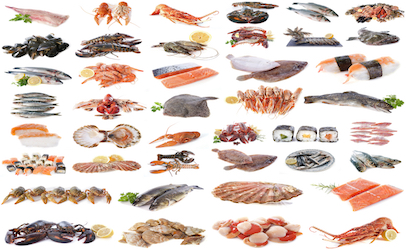 Imported molluscan shellfish from Europe are as safe as if they were harvested off Puget Sound or Massachusetts Bay, according to a Food and Drug Administration finding. FDA’s equivalence determination means two-way raw shellfish trade across the Atlantic is likely to be back on after a lapse of almost eight years.
Imported molluscan shellfish from Europe are as safe as if they were harvested off Puget Sound or Massachusetts Bay, according to a Food and Drug Administration finding. FDA’s equivalence determination means two-way raw shellfish trade across the Atlantic is likely to be back on after a lapse of almost eight years.
“I plan to announce more over the coming year about this proposed equivalence determination as we continue to work with the EU (European Union) on the details for resuming mutually beneficial trade in this area,” said a statement from FDA Commissioner Scott Gottlieb.
“In the meantime, I’m committed to taking new approaches like this to maximize our shared resources and create greater efficiency in the trade of molluscan shellfish.”
The U.S. and EU have not traded any raw molluscan shellfish products for nearly eights years. The European Commission has not allowed U.S. shellfish to enter the EU since 2010. The FDA has not permitted the import of live, fresh or fresh-frozen molluscan shellfish from the EU since the 1980s.
“In order to help break down this trade barrier and ensure the safety of imported shellfish products in both markets, the U.S. and the EU have been actively working to move an equivalence determination process forward,” Gottlieb said in the announcement.
The FDA and the EU have “set in motion steps that will allow molluscan shellfish trade – or what you may know as clams, mussels, oysters, and scallops, among others – between the U.S. and the EU for the first time in years,” according to the FDA commissioner.
Specifically, the FDA has published a proposed determination that the safety controls in the EU are equivalent to U.S. regulations. In a separate but complementary action, the European Commission is completing administrative procedures for its own proposed determination that U.S. safety controls are equivalent to those in the EU, a necessary step toward resuming trade.
The FDA commissioner says the bilateral effort shows that food safety and market access can go hand-in-hand. It’s another great case of the “FDA collaborating with U.S. trade agencies and working with a trusted international partner to better prioritize resources, ensure food safety and facilitate mutually beneficial trade,” according to Gottlieb.
According to the Brookings Institution, the American seafood industry contributes more than $90 billion to the U.S. economy and supports about 1.5 million jobs. Fish products account for more than $5 billion in the total value of U.S. exports, and roughly one-third of that is shellfish. With a 6 percent share of global trade, the U.S. represents the sixth-largest supplier of fish and seafood products to the world market.
According to Gottlieb, progress toward resuming two-way shellfish trade is a result of a multi-year, in-depth and cooperative review of shellfish safety systems in the U.S. and the EU. Technical experts on both sides of the Atlantic have concluded that many of the safety controls in the EU and the U.S are equivalent. Both governments recommended these actions after reviewing existing food safety programs, safety measures for molluscan shellfish, and on-site audits to verify each other’s systems.
Gottlieb says the proposed shellfish equivalence determination will help to unlock economic opportunity for both U.S. and EU exporters by creating new market access as well as making a wider selection of healthy and safe shellfish options available to consumers.
“It will also ensure American consumers that imported molluscan shellfish from Europe is as safe as what we produce in the U.S,” he said.
The U.S. and the EU worked with individual states and European countries to determine interest in participating in the initial equivalence evaluation, which required them to be subject to on-site audits.
The FDA worked with the Interstate Shellfish Sanitation Conference as well as the Pacific Coast and East Coast shellfish associations to identify interested U.S. states that volunteered to participate. If the determination becomes final, Massachusetts and Washington state will once again be able to send bivalve molluscan shellfish to the European market – a first since 2010.
Shellfish exporters from Spain and the Netherlands will also be able to sell raw bivalve shellfish in the U.S. market – a first since the 1980s.
These states and countries are just the first, and we are committed to continuing to work with the EU on procedures to add more states and European countries, Gottlieb said. We share a goal to see other U.S. states subsequently added to the list of eligible exporters in an efficient way, following the completion of this important step.
(To sign up for a free subscription to Food Safety News, click here.)
